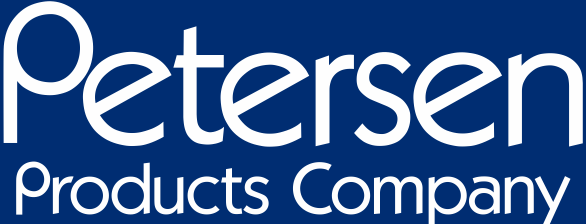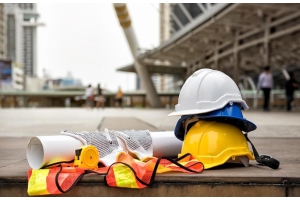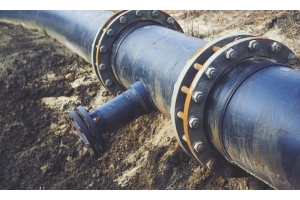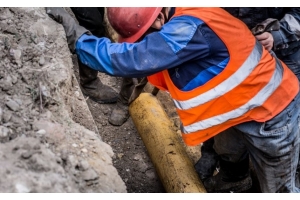Inflatable Line Stops vs Mechanical Line Stops, How To Decide Which To Use?


Line stopping is an important technique in pipeline maintenance that allows you to repair or modify a pipeline without shutting it down. There are two primary types: inflatable and mechanical line stops.
It works by temporarily closing off a segment of the pipeline, allowing professionals to safely complete critical tasks without disturbing operations. There are two major types of line stopping: inflatable and mechanical.
In this article, we'll go over the key differences between inflatable and mechanical line stops and help you decide which option is perfect for your specific needs.
What is Line Stopping?
Line stopping refers to a method of obstructing flow within a pipeline for a short period of time in order to carry out maintenance work or repairs without having to shut down the entire system. It entails isolating a segment of the pipeline in order to cut off a section that is under repair while still permitting the operation of the rest of the system.
Line stop techniques are very important in reducing productivity losses and overhead costs. This is because, line stops enhance maintenance efficacy by removing the need of a total shutdown and eases the disruption that would be incurring during repairs which makes it an economically feasible option for both scheduled and unscheduled repairs of a pipeline.
What are Inflatable Line Stops?
Inflatable line stops use an inflatable plug, usually filled with water, air or gas, to stop the flow of a pipeline. The plug expands inside the pipe, creating a seal and temporarily blocking the passage of liquids or gasses.
During installation of inflatable line stops, a professional puts the deflated plug into the pipe through a hot/live tap and inflates it to the appropriate pressure and size, resulting in a tight seal. After the work is done, the plug is deflated and removed, allowing flow to continue.
Inflatable line stops are commonly used in water, gas, and chemical systems, making them perfect for situations that require a flexible and quick solution.
What are Mechanical Line Stops?
Mechanical line stops use a solid item, such as a plug or valve, to physically block flow in a pipeline. Unlike inflatable line stops, mechanical stops use a rigid component to form a seal and isolate the pipe section.
The mechanical stopper is typically installed in the pipeline via a hot tap or access point. It is positioned to stop the flow. Once the repair or maintenance is completed, the line stop plug is removed and normal flow resumes.
Inflatable Vs Mechanical Line Stops: Key Differences
When deciding between inflatable and mechanical line stops, it's critical to understand how each works in different scenarios. Here's an overview of the main differences to help you decide which choice is best for your pipeline maintenance or repair needs
- Installation Process
Inflatable line stops are quick and easy to install. They require a smaller hot tap hole and lighter weight equipment making them perfect for circumstances requiring a less impact to pipeline integrity. They conform to out of round and other pipeline conformations and may be installed in an elbow. Mechanical line stops, on the other hand, require an essentially round pipeline, larger hot tap hole, and larger tapping and installation equipment, making deployment more time-consuming. Inflatable line stops mat not be used as the primary means of protection of personnel downstream.
- Durability and Longevity
Mechanical line stops are solid and suitable for long-term use and in some cases higher pressure. They are often better for permanent or lengthy stops. Inflatable line stops are best suited for temporary, short-term solutions and may be used with a mechanical line stop for redundancy and a better seal in out-of-round pipelines.
- Cost
Inflatable line stops are a cost-effective option for temporary or short-term applications due to their lower initial cost. However, mechanical line stops are more secure and may be used for protection of people downstream. They may have higher value due to their mechanical durability and long term performance.
- Flexibility
Inflatable line stops offer greater flexibility and can be installed in tight spaces that mechanical solutions may not be suitable for. Mechanical line stops, while more rigid and durable, often require more space and clearance for appropriate installation, restricting their application in tight spaces.
When to Use Inflatable vs. Mechanical Line Stops?
The inflatable line stops are best suited for providing temporary fixes and short-term flow cessation in water and sewer systems. They are also best for use in cases which require fast setup in order to eliminate delays.
Pros and Cons of Inflatable vs. Mechanical Line Stops
Inflatable Line Stops
Pros:
- Inflatable line stops are cost-effective, making them an affordable solution for temporary flow isolation.
- Their quick installation enables faster response times, minimizing downtime.
- They are flexible and adaptable, suitable for various pipeline sizes and restricted areas.
Cons:
- They are primarily intended as a temporary solution and are not designed for long-term use.
- They may not be used for protection of people downstream.
Mechanical Line Stops
Pros:
- Mechanical line stops offer high durability, ensuring reliability in challenging environments.
- They can handle extreme pressures, making them ideal for essential infrastructure needs.
- They may be used for protection of people downstream.
Cons:
- The mechanical line stop requires a larger tap hole that can impact the pipeline integrity.
- The installation process for mechanical line stops is more complicated and requires specific knowledge and expertise.
- They typically have a higher initial cost compared to inflatable options, which can impact budget considerations.
How to Choose Between Inflatable and Mechanical Line Stops?
When choosing between inflatable and mechanical line stops, consider your project's individual requirements. Each technique has specific advantages that address different pipeline conditions and operating requirements.
Here are some important factors to help you make an informed decision:
- Pipeline Pressure and Temperature: Pipeline Pressure and Temperature: Mechanical line stops are appropriate where people will be working down stream and for very high-pressure and extreme temperature applications while Inflatable line stops may be used inlow-medium pressure, temperatures up to 400° F and difficult chemical applications.
- Duration of Repair or Maintenance: Inflatable line stops are generally used for short repairs, whereas mechanical line stops are often better for long-term solutions.
- Budget Constraints: Inflatable line stops typically are less expensive for short-term use, but mechanical line stops may provide superior long-term value in challenging settings.
- Pipeline Type and Material: Different pipeline types and structural integrity may have an impact on the compatibility of inflatable and mechanical stops, therefore evaluate your pipeline carefully. Mechanical line stops have greater pressure on a smaller area whereas inflatable line stops put less stress on the pipe because there is a lower pressure, larger contact sealing area. Weld beads, heavy corrosion and build-up of material in the pipeline is better suited for inflatable line stops.
- Urgency of the Project: Inflatable line stops allow for faster installation, making them perfect for urgent projects, whereas mechanical stops require more time and bigger equipment.
- Limited Space/Indoor Applications: Inflatable line stops are easier to install in applications with limited space and indoors versus bulkier, heavier mechanical line stop equipment.
By evaluating all of these factors, you can select the line stop method that best matches your operational requirements, leading in a successful and efficient pipeline maintenance or repair process.
Conclusion
To summarize, both inflatable and mechanical line stops play important roles in pipeline maintenance and repair, with each having unique advantages and applications. Inflatable line stops are well-known for their ease of installation and low cost, making them excellent for short-term solutions. They are ideal for quick repairs with little downtime required.
Mechanical line stops, on the other hand, are more durable and capable of dealing with higher pressures, making them ideal for vital infrastructure and long-term applications especially when people are working downstream.
Disclaimer: The information may be used but with no warranty or liability. This information is believed to be correct but should always be double checked with alternative sources. Strictly adhere to and follow all applicable national and local regulations and practices.
Regardless of these comments, it is always necessary to read and understand manufactures instructions and local regulations prior to using any item.






